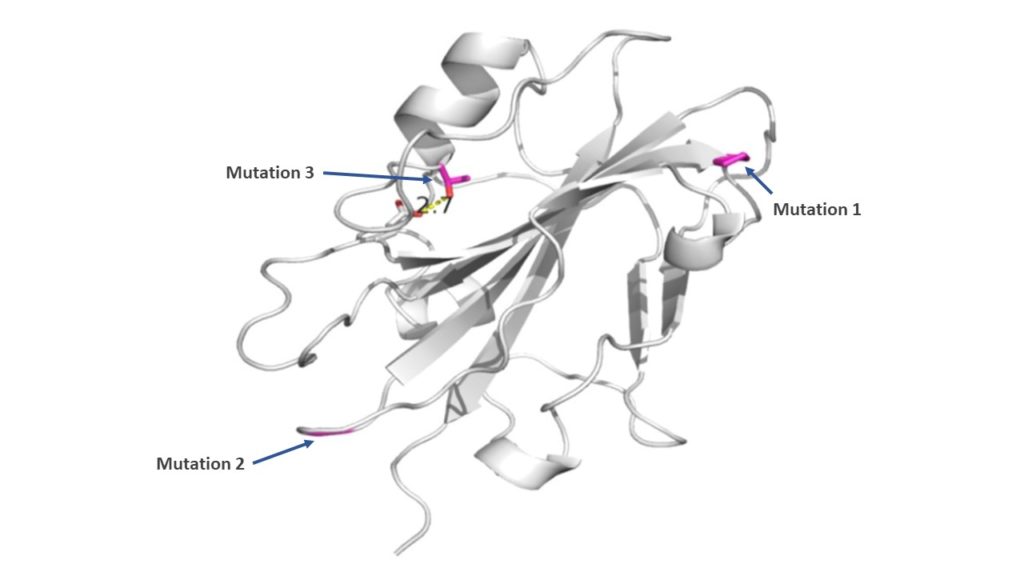27 March 2023
Rice gene identified that boosts number of flowers when inactivated
An international research team, led by the University of Milan, has identified a gene in rice that, when blocked, boosts the number of inflorescence branches and flowers. In the study, KeyGene scientists identified three plants, each having a small mutation in the gene, allowing for the study of the gene’s role in flowering. Follow-up research is aimed at using variations in the gene for innovations in plant breeding in rice and other cereals as more flowers can potentially lead to a higher grain yield. The findings are published in Nature Plants today.
Florigens
Just over a century ago, two American researchers, Garner and Allard, while studying the flowering time of tobacco and other cultivated species, understood that plants have a sophisticated system to measure the relative length of day and night, discovering a sophisticated system of seasonal time measurement. With this mechanism, plants can align growth and development with the seasons and start flowering (and therefore reproduction) at the most useful moment for the propagation of the species. In 1936, a Russian scientist, Mikhail Chailakhyan, demonstrated the existence of a mobile signal produced in the leaves during the part of the season that is favorable for flowering, and able to move along the veins to reach the shoot. Here, the mobile signal served as a trigger for flower production. Chailakhyan, coined the term florigen (flower generator) to describe this signal.
It took another 70 years to discover the molecular nature of the elusive mobile signal. In 2007, a study demonstrated that florigens are small proteins that function as regulators of gene expression, turning genes on or off. Once they reach the top of the shoot, the apex, the proteins switch on the genes needed to form flowers.

3D structure of the protein that is coded by the gene that boosts the number of rice flowers when the gene is blocked. KeyGene identified three rice plants with three different mutations that lead to changes in the protein, indicated in the picture
Non-classical florigen
From the discovery of the molecular nature of the florigen, it has been observed that many plant species produce them in the leaves. However, a novel study published in Nature Plants shows that rice, a model system for studying cereals, has a peculiar florigen that violates some of the characteristics defined by over 100 years of studies. The research group led by scientists at the University of Milan, demonstrated the existence of a florigen produced directly in the shoot apical meristem, the region of the plant containing stem cells and responsible for the formation of the inflorescence. Therefore this new florigen is not produced in the leaves and is not transmitted over long distances in the plant. Furthermore, its contribution to flowering time is marginal. Its main function is to define the number of branches of the inflorescence.
Induced desired variation
The research team was supported by KeyGene scientists who raised and identified three rice plants having different chemically induced mutations in the studied gene. Using the offspring of these plants, the team was able to demonstrate that blocking the gene in the plant causes a significant increase in the number of inflorescence branches, leading to an increase in the number of flowers.
This change in plant development is particularly important for plant breeding, as a greater number of flowers can lead to a greater number of seeds and therefore to increased yields. Furthermore, the discovered mechanism proves to be conserved in other cereals than rice, where it may be exploited to improve production too. Efforts are now aimed at converting this basic discovery into an effective tool for the improvement of rice and other crops.
Researchers from three Departments of the University of Milan participated in the study as well as international collaborators from Japan, China, the United States, Germany and the Netherlands. A decisive contribution also came from the seed company Lugano Leonardo (Italy). This collaboration has made it possible to carry out experiments under field conditions.
Read more
- The paper in Nature Plants: Two florigens and a florigen-like protein form a triple regulatory module at the shoot apical meristem to promote reproductive transitions in rice. Nature Plants, Giaume et al., https://www.nature.com/articles/s41477-023-01383-3
- KeyGene and Tierra Seed Science collaborate for innovation in rice, news item on KeyGene.com, 2020
- Shriram and KeyGene Join Forces To Develop Improved Hybrid Rice, news item on KeyGene.com, 2018